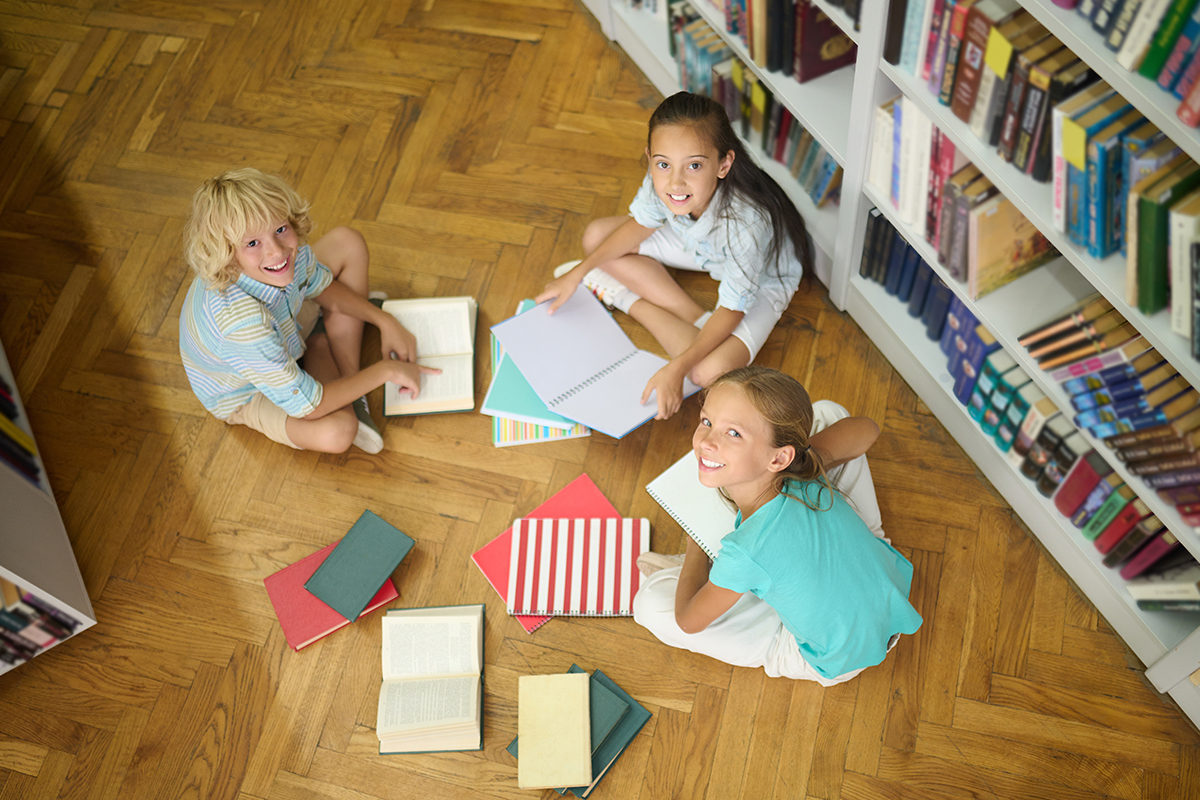Literature helps children broaden their horizons, develop their imagination and learn various life skills. However, books should be appropriate to the child’s age, interests and level of understanding. Let’s look at how to choose books for children of different ages.
Literature for young preschool children (0-3 years)
Young children under the age of three begin to familiarise themselves with the world around them through vivid images and sounds. They need books that help them develop sensory skills, sight and hearing.
Books with colourful pictures
At this age, books should be simple and colourful, with minimal text but large illustrations. You can choose cardboard books, books with textured elements or interactive books where the child can touch the pages, look at bright pictures and even listen to sounds. Such books help your baby remember simple words and concepts such as animals, colours and everyday objects.
Examples of books
‘Very Hungry Caterpillar’ by Eric Carle – a simple but colourful book that introduces the child to the basics of counting and the sequence of events when a small caterpillar eats different foods and turns into a butterfly.
‘The Gruffalo’ by Julia Donaldson is an exciting story about a savvy mouse and his adventures in the woods, illustrated with simple and amusing images.
Literature for pre-school children (ages 3-6)
Children between the ages of 3 and 6 are actively developing, beginning to ask questions and are curious about the world around them. It is important for them to choose books with more developed stories that instil the first lessons of morality, friendship and responsibility.
Entertaining and educational books
At this age, books should not only entertain but also educate. Stories can be longer than those for younger children, with understandable plots where colourful characters go on adventures and face life lessons. Illustrations still play an important role in helping the child visually experience the story and better understand the text.
Examples of books
‘Pippi Longstocking’ by Astrid Lindgren is a famous story about a girl with amazing strength and independent character. The book teaches courage, friendship and that it is possible to be special and not like others.
‘The Mummy Trolls and the Wizard’s Hat’ by Tove Jansson is an exciting tale about the adventures of the Mummy Trolls, which develops imagination and tells about such important concepts as family and caring for others.
Literature for younger students (ages 6-9)
Literature at this age should combine an engaging story and easy-to-understand language to keep them interested in reading.
Books for development
For younger students, books with short chapters and well-developed characters with whom the child can identify are appropriate. It is important that books are engaging, but also develop intellectual abilities, critical thinking and moral values. Stories can relate to real life and magical adventures, helping the child to learn more about the world.
Examples of books
‘Peter Pan’ by James Barrie – the classic story of a boy who doesn’t want to grow up, immerses children in a world of fantasy and adventure, teaches courage and friendship.
‘Alice in Wonderland’ by Lewis Carroll – a fascinating fairy tale with elements of absurdity, which helps to develop imagination and critical thinking, introduces children to the idea that the world can be different.
Literature for children of secondary school age (9-12 years old)
Children of this age begin to become interested in more complex topics such as morality, justice, friendship, and exploring their inner emotions.
Books for reflection
Literature for this age can be longer, with deeper stories that address philosophical or moral issues. It is important that books for this age help children to deal with complex social situations and encourage them to think about life values.
Examples of books
‘The Chronicles of Narnia’ by Clive Lewis is a series about a fantasy world where children are confronted with questions of good and evil, honesty and responsibility. These books teach the values of friendship and justice.
‘The Adventures of Tom Sawyer’ by Mark Twain – a classic story about a boy who seeks adventure and faces various difficulties, develops children’s sense of justice and the spirit of freedom.
The right choice of literature at every stage of development helps the child to open new horizons, learn to express his emotions, understand the world and others.


